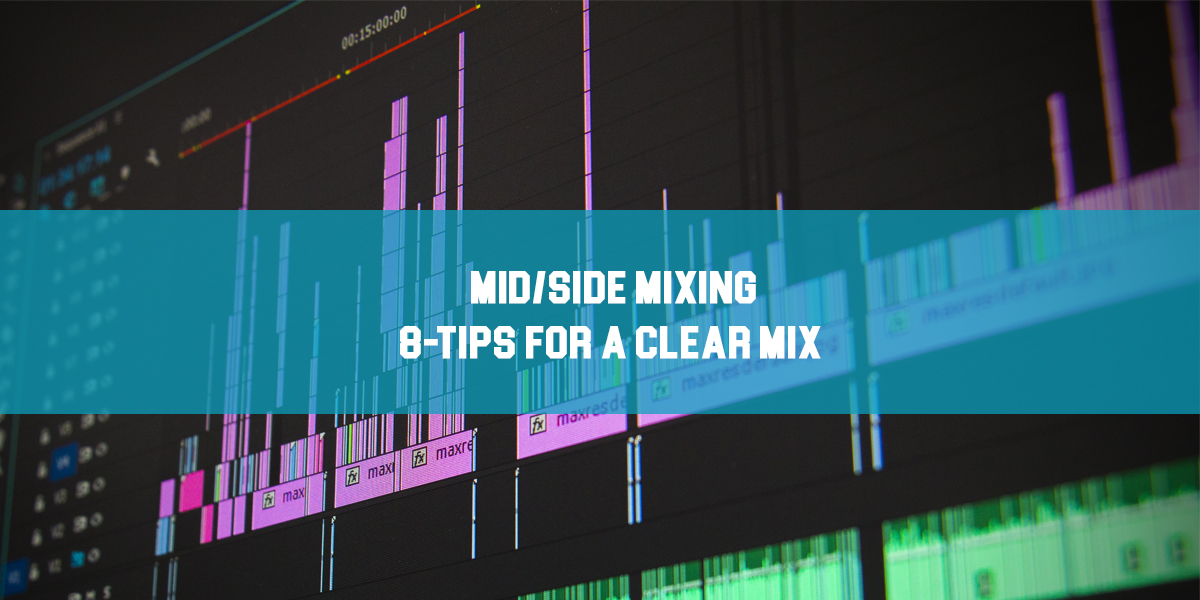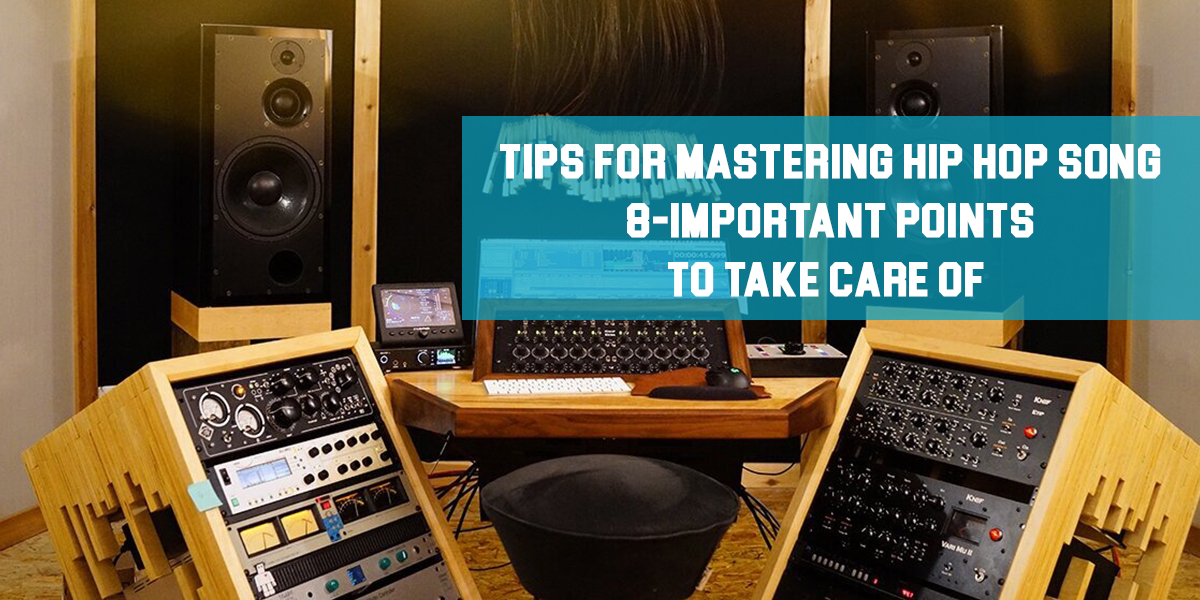What Is a Vocoder?
Introduction
The vocoder began as a way to compress the human voice for transmission through undersea cables. It has a long and fascinating history, including use during World War Two as a tool for cryptography, before it went on to give Kraftwerk and Afrika Bambaataa their iconic robotic sounds.
The vocoder continues to inspire creativity in millions of people. Let’s take a closer look at what a vocoder is, how it works, what it does, and how it’s used in today’s pop and electronic music.
What are vocoder effects?
The vocoder was invented in the 1920s, and you can hear it on many records from the 1970s. Vocoders were also used extensively by artists like Kraftwerk, Giorgio Moroder, Stevie Wonder, and Daft Punk.
If you’re reading this post, you’re probably interested in using vocoders in your own music—especially since they’ve made a comeback in pop music. It’s important to know that vocoders come in both hardware and software versions.
How does Vocoder work?
A vocoder works by analyzing the sound of a modulator signal, which is often a human voice. This modulator signal is divided into many frequency bands. The level of each band is then sent as a signal to a matching bandpass filter.
Each filter is set to the same frequency that was analyzed in the modulator. A sound source, called the carrier, is sent through this bank of filters. The level of every bandpass filter is automatically adjusted to match the corresponding frequency band in the modulator signal.
In this way, the carrier is filtered so that the harmonic content that passes through closely resembles that of the modulator signal.
How do you make my vocoder sound good?
To get great results when experimenting with vocoders, you’ll want to use a carrier wave that’s rich in harmonics. If you provide the vocoder with more harmonics, the modulation effects will be much more pronounced and intelligible compared to using a simple sine or triangle wave.
We recommend starting with a saw wave or a synth patch based on a saw wave. It’s also a good idea to compress and/or saturate your carrier signal before it enters the vocoder. A more limited dynamic range will help enhance the effect of the filter bank.
Now, let’s talk about the modulator. When you’re singing or speaking into a vocoder, don’t be afraid to over-articulate.
Pronounce the words more clearly than you normally would. Since the harmonic qualities of your voice will change a lot, your diction is key to achieving a clear vocoder effect (if that’s your goal).
The pitch of your voice isn’t very important when using a vocoder, so focus on making the other aspects of your voice as interesting as possible.
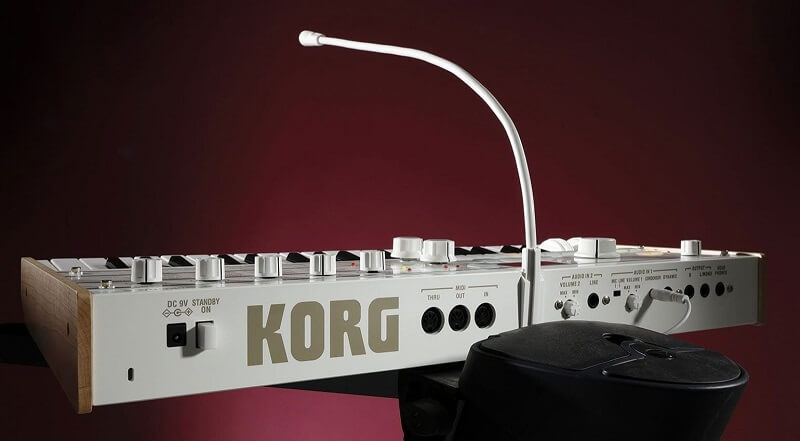
What are a vocoder’s parameters?
Here are a few common parameters found on vocoder plugins and hardware that might help inspire your creative process:
Bands
This refers to how many frequency bands the modulator signal is split into. Think of this as the “resolution” of your vocoder sound. Classic vocoders usually had fewer bands, so try using a setting of 8 to 12 bands for a more traditional vibe.
Frequency Range
This refers to the highest and lowest frequencies in the carrier signal that the vocoder will process. To make your vocoder sound clearer and easier to understand, try raising the upper frequency limit on your vocoder above about 5 kHz.
Formant
Some vocoders include a formant parameter (often called “shift”). This control boosts or lowers the filter frequencies, making your sound brighter or deeper. It’s great for blending, or for shifting between more “male” or “female” vocal qualities. In fact, some vocoders even have a dedicated “gender” parameter for this purpose!
Unvoiced
Unvoiced sounds are a natural part of human speech. Also known as plosives, these occur when you make a consonant by blowing air, like with the letters “p” or “b.” Many digital vocoders can detect these airy, noisy sounds, which cover a different frequency range than the pitched sounds made by vibrating vocal cords.
For example, in Ableton’s Vocoder audio effect, the Unvoiced knob lets you blend a noise generator with the carrier wave, helping those unpitched, transient sounds stay clear in your vocoded audio.
Just so you know, we’ll be listing these hardware vocoders in no specific order. They’ll be randomized, since we don’t want to rank them from best to worst.
Listed below are our Top 5 Hardware Vocoders:
1. Korg microKORG S Synthesizer and Vocoder
The Korg MicroKorg is a 37-key synthesizer. Technically, it’s a digital synth, not an analog one. If you’re unsure about the difference between digital and analog synths, let us explain.
Analog synths generate waveforms as signals and send them through electronic circuits, which can then be modified and filtered to create different sounds, frequencies, and effects. A digital synth, on the other hand, simply replicates this entire process electronically.
Some people argue that, because digital synths only imitate those sounds, they aren’t as authentic or pure as analog synths. To some extent, we agree. There’s something about shaping sounds using real onboard electronics that just feels different—more “classic,” if you will.
Still, in our opinion, there are some digital synths that do such a great job recreating the analog sound that you’d never know the difference. Our experience with the MicroKorg S is somewhat limited, especially since its polyphony is restricted. However, it’s a good starting point if you want to learn how to use both a vocoder and a synth in one unit. The keyboard has small keys, which might not be ideal for larger hands, but it’s simple to use and its compact design is easy to understand.
The MicroKorg S has a lot of appeal on the market. While there may be a bit of a learning curve, if you’re already interested in this type of synth, we think you’ll likely be very satisfied with your purchase.
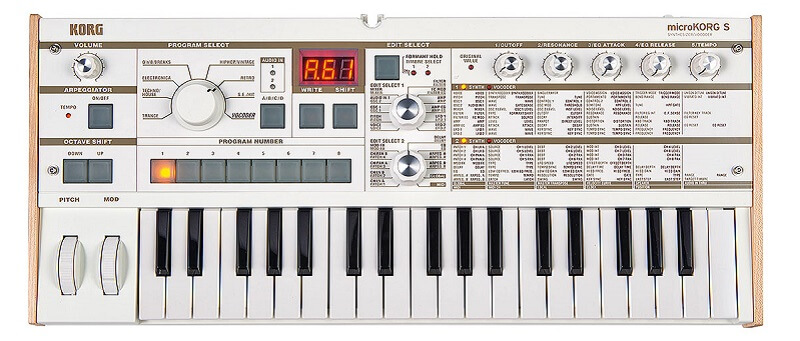
- 256 Programs – 192 presets / 64 Users
- Audio Input
- Stereo output
- MIDI: In / Out / Thru
| IMAGE | PRODUCT | Amazon Store | For US Customers | For EU Customers |
|---|---|---|---|---|
Korg microKORG S Synthesizer and Vocoder |
2. Arturia MicroFreak Vocoder Edition
A brand new wavetable oscillator now lets you load your own custom wavetables, and the synth also comes with a collection of built-in wavetables to help you get started.
The sequencer can now operate in chord and unison modes, as well as monophonically. You can also adjust the wave, timbre, and shape parameters more quickly by holding down the shift button while turning the corresponding encoder.
The new MicroFreak Vocoder Edition features 14 digital oscillator modes, analog filters, a wide array of modulation and randomization controls, and a powerful vocoder engine. The MicroFreak Vocoder offers a 16-band mode to transform your voice, with three waveforms and dedicated timbre and shape knobs to fine-tune the response of the 16 frequency bands.
The most obvious difference from the original—aside from the gooseneck microphone, of course—is the striking white design. Aside from the new look and included microphone, the MicroFreak Vocoder’s internal features will be immediately familiar to users of its predecessor.
Specifically, it includes an analog filter, digital and wavetable oscillators, a poly-aftertouch PCB keyboard, an arpeggiator, and a sequencer. This is a neat and compact vocoder that can deliver impressive results; our brief experience with it was very positive. The only real drawback is the need for a better mic input, but everything else is impressively well-designed for such a compact machine.
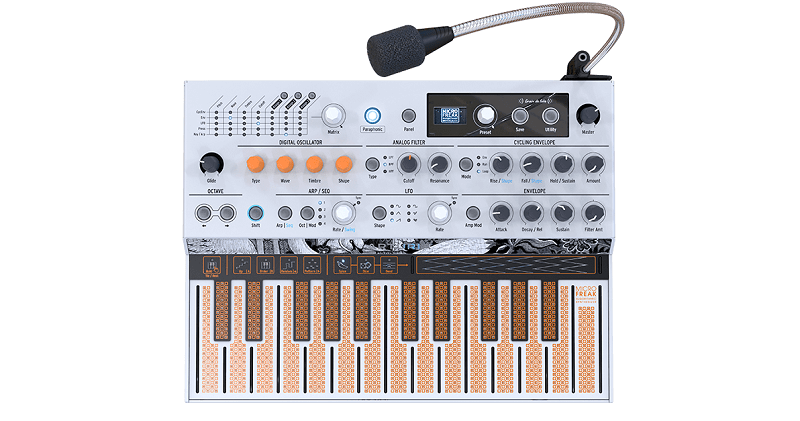
- MIDI In / Out: 3.5 mm TRS Jacks
- USB Port
- Dimensions: 311 x 233 x 55 mm
- Weight: 1.02 kg
| IMAGE | PRODUCT | Amazon Store | For US Customers | For EU Customers |
|---|---|---|---|---|
Arturia MicroFreak Vocoder |
3. Novation MiniNova 37-key Synthesizer with Vocoder
The Novation MiniNova is priced at around $400, which might seem a bit too inexpensive to some. However, we were genuinely impressed with what this synth offers at such an affordable price point.
Visually, it sports a gorgeous blue finish with wood-style panels. The blue and red LED lights add a nice touch, and the pitch wheels even glow blue. The knobs are also a great size, making it easy to navigate the controls.
The MiniNova was designed as a travel-friendly synth, with its compact and portable size. That’s why it only has 37 keys, and they’re smaller than standard piano keys. We’re usually not fans of small keys, but as we played scales up and down, we found that it’s something most people could easily get used to.
The MiniNova comes loaded with 256 onboard presets that you can tweak and shape as you play, or by using the vocoder. It uses the same synth engine as its bigger sibling, the Novation Ultranova. It features voice tuning and classic vocoder effects. You can layer up to five voices and tweak these sounds in real time.
A well-known producer friend of ours owns this synth, and while we were at his studio, we got to see it in action. We were absolutely blown away! Everything is neatly organized, the design is top-notch, and the vocoder functionality is fantastic. The only downside is the lack of battery power, but we’re willing to overlook that considering everything this beast can do!
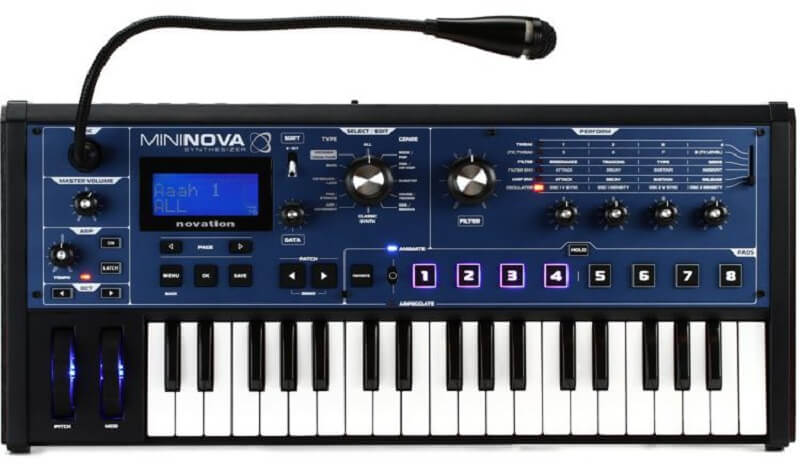
- Patch Select knob
- Pitch and Modulation wheel
- Dimensions (W x H x D): 560 x 75 x 250 mm
- Weight: 2.52 kg
| IMAGE | PRODUCT | Amazon Store | For All Customers |
|---|---|---|---|
Novation MiniNova 37-key Synthesizer |
4. Waldorf STVC String Synthesizer and Vocoder
Introducing the STVC (short for String Vocoder, as we believe). Housed in a solid all-metal enclosure, it follows the design tradition of Waldorf’s other keyboard synths, like the Blofeld. The STVC stands out as an exceptional machine. Combining a string machine with a vocoder, it boasts an elegant design, featuring charcoal gray paintwork that looks clean and professional.
The keyboard itself is a delight to play, featuring a four-octave range and aftertouch capability. Aftertouch is especially valuable when vocoding, as it allows you to modulate sounds without reaching for the modulation wheels.
Weighing just 7.5 kg, the STVC’s sturdy metal case feels substantial, and the handles on both sides are perfect for live performance. They make it easy to lift in and out of cases or onto stands. The full-sized, four-octave keyboard is velocity and pressure sensitive, giving it a solid and impressively firm feel.
Given the STVC’s character, some might think it only appeals to musicians nostalgic for the golden age of electronic music. Compared to other units, it’s larger, with the microphone conveniently mounted on top of the keyboard. As expected from Waldorf, the vocoder sounds incredible.
The STVC easily delivers all the classic string sounds, which alone would make it appealing. However, its vocoder section is also powerful and elegantly implemented. While vocoders aren’t always in high demand, the STVC shines in both classic and modern contexts.
The string sounds are fantastic, setting this apart from traditional vocoder units. Although it includes a modulation matrix board, we wish it was a bit larger for easier use. Overall, it’s an amazing unit and worth every penny!
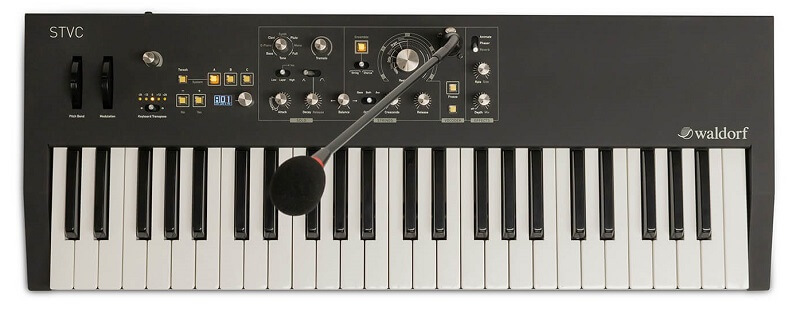
- USB 2.0 connector
- Stainless steel control knobs
- 6.3 mm Sustain pedal connection
- 6.3 mm Expression/Ext. Signal connection
| IMAGE | PRODUCT | Amazon Store | For US Customers | For EU Customers |
|---|---|---|---|---|
Waldorf STVC String Synthesizer and Vocoder |
5. Roland JD-Xi Analog/Digital Synthesizer with Vocoder
Over the last 30+ years, we’ve seen everything from Roland’s legendary TR drum machines and solid analog synths to some of the most innovative digital synth technologies ever made. To celebrate this legacy, Roland introduced the JD-Xi mini keyboard, a unique instrument that blends all these elements into what they call an interactive analog/digital crossover synthesizer.
The JD-Xi is designed as a compact, polyphonic powerhouse. Roland combined a monophonic analog section with their signature ‘SuperNATURAL’ digital synth engine, creating a fresh hybrid synthesizer, drum machine, and groove box. If you’re after a wide range of sounds at an affordable price in a portable package, this is definitely worth a look.
Despite its very plastic casing and the budget feel of the encoders and buttons, this is a powerful synthesizer. It offers 128 digital voices, split between 2 PCM-based digital synths, a drum part (26 voices), and 1 analog voice—for a total of 129 voices across 4 parts.
The JD-Xi features a 3-octave mini keyboard (velocity-sensitive, but no aftertouch) with compact pitch and mod wheels. For quickly sketching ideas, it includes a built-in 32-step pattern sequencer that supports real-time, TR-style, and step recording.
There’s a lot happening under the hood, and at this price point, you get a ton of value. We can easily see the JD-Xi being a great travel companion for live performances because of its small size, easy connectivity, versatility, and wide sound palette.
We only saw this one in a store and asked for more information about it. After doing detailed research, we picked out what we think are its best features. Personally, I really like the futuristic design, and the vocoder sounds good. The only downsides are the lack of a battery option and the small keys—otherwise, it’s hard to fault!
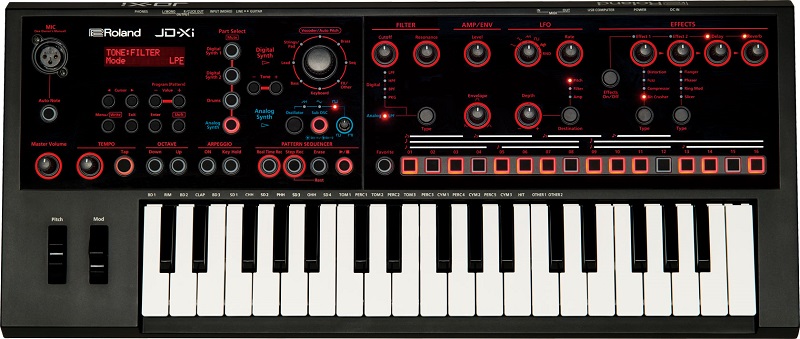
- Built-in arpeggiator
- LCD Display
- Dimensions (W x D x H): 575 x 245 x 85 mm
- Weight: 2.2 kg
| IMAGE | PRODUCT | Amazon Store | For US Customers | For EU Customers |
|---|---|---|---|---|
Roland JD-Xi |
Vocoders Latest Additions
Unfortunately, there haven’t been many new hardware vocoders released this year. We’ll be keeping a close eye on the market and will update this article as soon as any new hardware options become available.
On the bright side, there are several new vocoder plugins you can try out in your DAW. Below, we’ve listed some of them by name so you can explore and test them yourself:
- Zynaptiq Orange Vocoder IV Plug-in
- Antares Auto-Tune Vocodist Vocoder Plug-in
- Cherry Audio Rackmode Signal Processors Bundle
- MeldaProduction MVocoder Plug-in
Conclusion
If you’re searching for a synthesizer with vocoder capabilities, the five models we’ve listed will give you everything you need for an awesome vocoder experience.
There are also plenty of plugin options available if you prefer a fully digital setup inside your DAW. However, this article focuses on hardware models and the hands-on experience they provide.
If you have any questions about this topic, just leave us a comment below—we’ll be happy to help!

